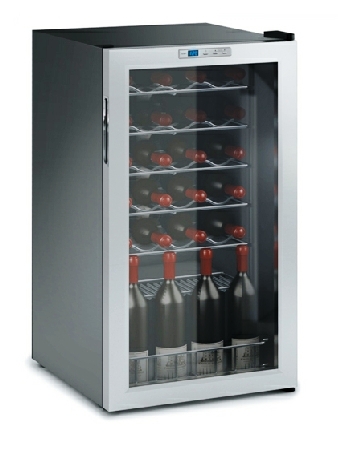Phone: (301) 352-5738
Email: info@CoastalClimateControl.com
Office | Warehouse:
1598 Whitehall Road, Suite D
Annapolis, Maryland 21409
Is Your Wine Whining?

Did you know that if you store wine at higher temperatures than 65°F, you will actually be accelerating the aging process? Conversely, storing wines at colder than 45°F means they will not fully develop, robbing the wine (and yourself) of its full potential. Even that inexpensive bottle of Chardonnay you bought on sale last week can be adversely affected by storing it under your boat's salon settee until you've made room in the ice box, which in itself is normally at 40°F, so not a good place to put your wine anyway.
The temperature at which you store, and serve, your wine will have an impact on its flavor and your enjoyment. Especially if you plan to store your wine for at least 6 months, you know, for that cruise you've been planning to take before life gets in the way. On my boat, wine doesn't last long in storage, but that doesn't mean I want the taste to be compromised because I didn't handle it correctly. Something that could be so easily fixed.
It is suggested that the average temperature for wine storage is 55. I suspect even your bilge will maintain temps higher than this, plus there is the concern of those wet days when water seeps in that may also remove the labels leaving you with mystery wine. Not a bad thing if you're mixing that with a mystery dinner made with food cans that suffered the same fate.
Other tips to preserve the essence of your wine:
- Store it in dim light (UV can break down the wine)
- Keep the air out (prevents oxidation, turning your wine into vinegar)
- Store on side (keeps the cork moist, preventing shrinkage and air getting in, see above)
- Not too much Humidity (storage at 65-75% is best, helps ensure wine cork doesn't shrink, which can happen in a home refrigerator which naturally dehumidifys)
- Limit Vibrationu (a little tricky on a boat)
- Keep at a constant temperature (Fluctating temps impact aging and chemical processes, harming flavor)
Here's where a wine refrigerator, your own personal wine cellar, comes in handy. These cabinets can be set at the proper temperature, or an average temperature if you have a mixture of wine types, to ensure your beverage of choice is at its peak condition and ready for your enjoyment.

Quick Wine Temperature Guide:
40-50°F — Light, dry white wines and sparkling
50-60°F — Full-bodies white wines and light, fruity red wines
60-65°F — Full-bodied red wines and ports
Specifically:
45°F — Champagne, Cava, Asti, Prosecco, Sparkling
47°F — Muscat, Rose, Riesling
50°F — Pinot Grigio, Savignon Blanc, Semillon
53°F — Chardonnay, Viognier, White Burgundy, Chablis
55°F — Pinot Noir, Beaujolis, Barbera, Grenache
58°F — Zinfandel, Chianti, Red Burgundy
62°F — Cabernet Sauvignon, Merlot, Malbec
65°F — Shiraz, Syrah, Bordeaux
There are 12v/24v wine refrigerators out there that would work beautifully on your boat, without demanding too much energy. You keep your refrigerator running in between weekend adventures, why not keep your wine in lovely condition too! One less bundle to haul to the boat each time you want to enjoy a cruise, spontaneous or planned.
By accepting you will be accessing a service provided by a third-party external to https://coastalclimatecontrol.com/






